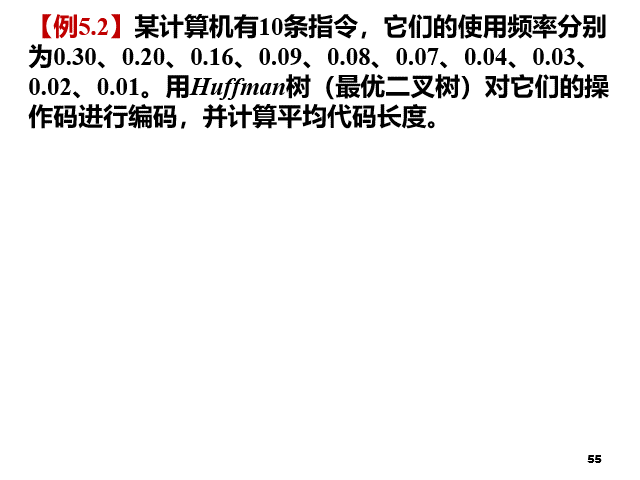datawhale11月组队学习 模型压缩技术2:PyTorch模型剪枝教程
文章目录
- 一、 prune模块简介
- 1.1 常用方法
- 1.2 剪枝效果
- 1.3 二、三、四章剪枝测试总结
- 二、局部剪枝(Local Pruning)
- 2.1 结构化剪枝
- 2.1.1 对weight进行随机结构化剪枝(random_structured)
- 2.1.2 对weight进行迭代剪枝(范数结构化剪枝,ln_structured)
- 2.2 非结构化剪枝
- 2.2.1 对bias进行随机非结构化剪枝
- 2.2.2 对多层网络进行范数非结构化剪枝(l1_unstructured)
- 2.3 永久化剪枝(remove)
- 三、全局剪枝(GLobal pruning)
- 四、自定义剪枝(Custom pruning)
- 《datawhale2411组队学习之模型压缩技术1:模型剪枝(上)》:介绍模型压缩的几种技术;模型剪枝基本概念、分类方式、剪枝标准、剪枝频次、剪枝后微调等内容
- 《datawhale11月组队学习 模型压缩技术2:PyTorch模型剪枝教程》:介绍PyTorch的prune模块具体用法
- 《datawhale11月组队学习 模型压缩技术3:2:4结构稀疏化BERT模型》:介绍基于模式的剪枝——2:4结构稀疏化及其在BERT模型上的测试效果
项目地址awesome-compression、在线阅读
一、 prune模块简介
PyTorch教程《Pruning Tutorial》、torch.nn.utils.prune文档
1.1 常用方法
Pytorch在1.4.0版本开始,加入了剪枝操作,在torch.nn.utils.prune模块中,主要有以下剪枝方法:
| 剪枝类型 | 子类型 | 剪枝方法 |
|---|---|---|
| 局部剪枝 | 结构化剪枝 | 随机结构化剪枝 (random_structured) |
范数结构化剪枝 (ln_structured) | ||
| 非结构化剪枝 | 随机非结构化剪枝 (random_unstructured) | |
范数非结构化剪枝 (ln_unstructured) | ||
| 全局剪枝 | 非结构化剪枝 | 全局非结构化剪枝 (global_unstructured) |
| 自定义剪枝 | 自定义剪枝 (Custom Pruning) |
除此之外,模块中还有一些其它方法:
| 方法 | 描述 |
|---|---|
prune.remove(module, name) | 剪枝永久化 |
prune.apply | 使用指定的剪枝方法对模块进行剪枝。 |
prune.is_pruned(module) | 检查给定模块的某个参数是否已被剪枝。 |
prune.custom_from_mask(module, name, mask) | 基于自定义的掩码进行剪枝,用于定义更加细粒度的剪枝策略。 |
1.2 剪枝效果
-
参数变化:
- 剪枝前,
weight是模型的一个参数,意味着它是模型训练时优化的对象,可以通过梯度更新(通过optimizer.step()来更新它的值)。 - 剪枝过程中,原始权重被保存到新的变量
weight_orig中,便于后续访问原始权重。 - 剪枝后,
weight是剪枝后的权重值(通过原始权重和剪枝掩码计算得出),但此时不再是参数,而是模型的属性(一个普通的变量)。
- 剪枝前,
-
掩码存储:生成一个名为
weight_mask的剪枝掩码,会被保存为模块的一个缓冲区(buffer)。 -
前向传递:PyTorch 使用
forward_pre_hooks来确保每次前向传递时都会应用剪枝处理。每个被剪枝的参数都会在模块中添加一个钩子来实现这一操作。
1.3 二、三、四章剪枝测试总结
- 对
weight进行剪枝,效果见1.2 章节。 - 对
weight进行迭代剪枝,相当于把多个剪枝核(mask)序列化成一个剪枝核, 最终只有一个weight_orig和weight_mask,hook也被更新。 - 对
weight剪枝后,再对bias进行剪枝,weight_orig和weight_mask不变,新增bias_orig和bias_mask,新增bias hook。 - 可以对多个模块同时进行剪枝,最后使用
remove进行剪枝永久化
使用remove函数后,weight_orig和bias_orig被移除,剪枝后的weight和bias成为标准的模型参数。经过remove操作后,剪枝永久化生效。此时,剪枝掩码weight_mask和 hook不再需要,named_buffers和_forward_pre_hooks都被清空。 - 局部剪枝需要根据自己的经验来决定对某一层网络进行剪枝,需要对模型有深入了解,所以全局剪枝(跨不同参数)更通用,即从整体网络的角度进行剪枝。采用全局剪枝时,不同的层被剪掉的百分比可能不同。
parameters_to_prune = ((model.conv1, 'weight'),(model.conv2, 'weight'),(model.fc1, 'weight'),(model.fc2, 'weight'))# 应用20%全局剪枝
prune.global_unstructured(parameters_to_prune, pruning_method=prune.L1Unstructured, amount=0.2)
最终各层剪枝比例为(随机的):
Sparsity in conv1.weight: 5.33%
Sparsity in conv2.weight: 17.25%
Sparsity in fc1.weight: 22.03%
Sparsity in fc2.weight: 14.67%
Global sparsity: 20.00%
- 自定义剪枝需要通过继承class BasePruningMethod()来定义,,其内部有若干方法:
call, apply_mask, apply, prune, remove。其中,必须实现__init__和compute_mask两个函数才能完成自定义的剪枝规则设定。此外,您必须指定要实现的修剪类型( global, structured, and unstructured)。
二、局部剪枝(Local Pruning)
局部剪枝,指的是对网络的单个层或局部范围内进行剪枝。其中,非结构化剪枝会随机地将一些权重参数变为0,结构化剪枝则将某个维度某些通道的权重变成0。
总结一下2.1和2.2的效果:
import torch
from torch import nn
import torch.nn.utils.prune as prune
import torch.nn.functional as F
from torchsummary import summary# 1.定义一个经典的LeNet网络
class LeNet(nn.Module):def __init__(self, num_classes=10):super(LeNet, self).__init__()self.conv1 = nn.Conv2d(in_channels=1, out_channels=6, kernel_size=5)self.conv2 = nn.Conv2d(in_channels=6, out_channels=16, kernel_size=5)self.maxpool = nn.MaxPool2d(kernel_size=2, stride=2)self.fc1 = nn.Linear(in_features=16 * 4 * 4, out_features=120)self.fc2 = nn.Linear(in_features=120, out_features=84)self.fc3 = nn.Linear(in_features=84, out_features=num_classes)def forward(self, x):x = self.maxpool(F.relu(self.conv1(x)))x = self.maxpool(F.relu(self.conv2(x)))x = x.view(x.size()[0], -1)x = F.relu(self.fc1(x))x = F.relu(self.fc2(x))x = self.fc3(x)return x
device = torch.device("cuda" if torch.cuda.is_available() else "cpu")
model = LeNet().to(device=device)# 2.打印模型结构
summary(model, input_size=(1, 28, 28))
----------------------------------------------------------------Layer (type) Output Shape Param #
================================================================Conv2d-1 [-1, 6, 24, 24] 156MaxPool2d-2 [-1, 6, 12, 12] 0Conv2d-3 [-1, 16, 8, 8] 2,416MaxPool2d-4 [-1, 16, 4, 4] 0Linear-5 [-1, 120] 30,840Linear-6 [-1, 84] 10,164Linear-7 [-1, 10] 850
================================================================
Total params: 44,426
Trainable params: 44,426
Non-trainable params: 0
----------------------------------------------------------------
Input size (MB): 0.00
Forward/backward pass size (MB): 0.04
Params size (MB): 0.17
Estimated Total Size (MB): 0.22
----------------------------------------------------------------
# 3.打印模型的状态字典,状态字典里包含了所有的参数
print(model.state_dict().keys())
odict_keys(['conv1.weight', 'conv1.bias', 'conv2.weight', 'conv2.bias', 'fc1.weight', 'fc1.bias', 'fc2.weight', 'fc2.bias', 'fc3.weight', 'fc3.bias'])
# 4.打印第一个卷积层的参数
module = model.conv1
print(list(module.named_parameters()))
[('weight', Parameter containing:
tensor([[[[ 0.1529, 0.1660, -0.0469, 0.1837, -0.0438],[ 0.0404, -0.0974, 0.1175, 0.1763, -0.1467],[ 0.1738, 0.0374, 0.1478, 0.0271, 0.0964],[-0.0282, 0.1542, 0.0296, -0.0934, 0.0510],[-0.0921, -0.0235, -0.0812, 0.1327, -0.1579]]],......[[[-0.1167, -0.0685, -0.1579, 0.1677, -0.0397],[ 0.1721, 0.0623, -0.1694, 0.1384, -0.0550],[-0.0767, -0.1660, -0.1988, 0.0572, -0.0437],[ 0.0779, -0.1641, 0.1485, -0.1468, -0.0345],[ 0.0418, 0.1033, 0.1615, 0.1822, -0.1586]]]], device='cuda:0',requires_grad=True)), ('bias', Parameter containing:
tensor([ 0.0503, -0.0860, -0.0219, -0.1497, 0.1822, -0.1468], device='cuda:0',requires_grad=True))]
# 5.打印module中属性张量named_buffers,此时为空列表
print(list(module.named_buffers()))
[]
2.1 结构化剪枝
2.1.1 对weight进行随机结构化剪枝(random_structured)
对LeNet的conv1层的weight参数进行随机结构化剪枝,其中 amount是一个介于0.0-1.0的float数值,代表比例, 或者一个正整数,代表剪裁掉多少个参数.
prune.random_structured(module, name="weight", amount=2, dim=0)
# 1.再次打印模型的状态字典,发现conv1层多了weight_orig和weight_mask
print(model.state_dict().keys())
odict_keys(['conv1.bias', 'conv1.weight_orig', 'conv1.weight_mask', 'conv2.weight', 'conv2.bias', 'fc1.weight', 'fc1.bias', 'fc2.weight', 'fc2.bias', 'fc3.weight', 'fc3.bias'])
Conv2d(1, 6, kernel_size=(5, 5), stride=(1, 1))
# 2. 剪枝后,原始的weight变成了weight_orig,并存放在named_parameters中
print(list(module.named_parameters()))
[('bias', Parameter containing:
tensor([ 0.0503, -0.0860, -0.0219, -0.1497, 0.1822, -0.1468], device='cuda:0',requires_grad=True)), ('weight_orig', Parameter containing:
tensor([[[[ 0.1529, 0.1660, -0.0469, 0.1837, -0.0438],[ 0.0404, -0.0974, 0.1175, 0.1763, -0.1467],[ 0.1738, 0.0374, 0.1478, 0.0271, 0.0964],[-0.0282, 0.1542, 0.0296, -0.0934, 0.0510],[-0.0921, -0.0235, -0.0812, 0.1327, -0.1579]]],......[[[-0.1167, -0.0685, -0.1579, 0.1677, -0.0397],[ 0.1721, 0.0623, -0.1694, 0.1384, -0.0550],[-0.0767, -0.1660, -0.1988, 0.0572, -0.0437],[ 0.0779, -0.1641, 0.1485, -0.1468, -0.0345],[ 0.0418, 0.1033, 0.1615, 0.1822, -0.1586]]]], device='cuda:0',requires_grad=True))]
# 3. 剪枝掩码矩阵weight_mask存放在模块的buffer中
print(list(module.named_buffers()))
[('weight_mask', tensor([[[[0., 0., 0., 0., 0.],[0., 0., 0., 0., 0.],[0., 0., 0., 0., 0.],[0., 0., 0., 0., 0.],[0., 0., 0., 0., 0.]]],[[[1., 1., 1., 1., 1.],[1., 1., 1., 1., 1.],[1., 1., 1., 1., 1.],[1., 1., 1., 1., 1.],[1., 1., 1., 1., 1.]]],[[[1., 1., 1., 1., 1.],[1., 1., 1., 1., 1.],[1., 1., 1., 1., 1.],[1., 1., 1., 1., 1.],[1., 1., 1., 1., 1.]]],[[[0., 0., 0., 0., 0.],[0., 0., 0., 0., 0.],[0., 0., 0., 0., 0.],[0., 0., 0., 0., 0.],[0., 0., 0., 0., 0.]]],[[[1., 1., 1., 1., 1.],[1., 1., 1., 1., 1.],[1., 1., 1., 1., 1.],[1., 1., 1., 1., 1.],[1., 1., 1., 1., 1.]]],[[[1., 1., 1., 1., 1.],[1., 1., 1., 1., 1.],[1., 1., 1., 1., 1.],[1., 1., 1., 1., 1.],[1., 1., 1., 1., 1.]]]]))]
# 4. 剪枝操作后的weight已经不再是module的参数, 而只是module的一个属性.
print(module.weight)
tensor([[[[ 0.0000, 0.0000, -0.0000, -0.0000, 0.0000],[ 0.0000, -0.0000, 0.0000, -0.0000, 0.0000],[ 0.0000, 0.0000, -0.0000, -0.0000, -0.0000],[-0.0000, 0.0000, -0.0000, -0.0000, 0.0000],[ 0.0000, 0.0000, -0.0000, -0.0000, -0.0000]]],[[[-0.0540, -0.1928, -0.0355, -0.0075, -0.1481],[ 0.0135, 0.0192, 0.0082, -0.0120, -0.0164],[-0.0435, -0.1488, 0.1092, -0.0041, 0.1960],[-0.1045, -0.0136, 0.0398, -0.1286, 0.0617],[-0.0091, 0.0466, 0.1827, 0.1655, 0.0727]]],[[[ 0.1216, -0.0833, -0.1491, -0.1143, 0.0113],[ 0.0452, 0.1662, -0.0425, -0.0904, -0.1235],[ 0.0565, 0.0933, -0.0721, 0.0909, 0.1837],[-0.1739, 0.0263, 0.1339, 0.0648, -0.0382],[-0.1667, 0.1478, 0.0448, -0.0892, 0.0815]]],[[[ 0.0000, 0.0000, 0.0000, -0.0000, 0.0000],[-0.0000, 0.0000, 0.0000, 0.0000, -0.0000],[-0.0000, 0.0000, -0.0000, -0.0000, 0.0000],[-0.0000, -0.0000, 0.0000, -0.0000, 0.0000],[ 0.0000, -0.0000, 0.0000, -0.0000, -0.0000]]],[[[ 0.1278, 0.1037, -0.0323, -0.1504, 0.1080],[ 0.0266, -0.0996, 0.1499, -0.0845, 0.0609],[-0.0662, -0.1405, -0.0586, -0.0615, -0.0462],[-0.1118, -0.0961, -0.1325, -0.0417, -0.0741],[ 0.1842, -0.1040, -0.1786, -0.0593, 0.0186]]],[[[-0.0889, -0.0737, -0.1655, -0.1708, -0.0988],[-0.1787, 0.1127, 0.0706, -0.0352, 0.1238],[-0.0985, -0.1929, -0.0062, 0.0488, -0.1152],[-0.1659, -0.0448, 0.0821, -0.0956, -0.0262],[ 0.1928, 0.1767, -0.1792, -0.1364, 0.0507]]]],grad_fn=<MulBackward0>)
对于每一次剪枝操作,PyTorch 会为剪枝的参数(如 weight)添加一个 forward_pre_hook。这个钩子会在每次进行前向传递计算之前,自动应用剪枝掩码(即将某些权重置为零),这保证了剪枝后的权重在模型计算时被正确地使用。
# 5.打印_forward_pre_hooks
print(module._forward_pre_hooks)
OrderedDict([(0, <torch.nn.utils.prune.RandomStructured object at 0x7f04012f8ca0>)])
简单总结就是:
weight不再是参数,它变成了一个属性,表示剪枝后的权重。weight_orig保存原始未剪枝的权重。weight_mask是一个掩码,表示哪些权重被剪去了(即哪些位置变为零)。- 钩子会保证每次前向传递时,
weight会根据weight_mask来计算出剪枝后的版本。
2.1.2 对weight进行迭代剪枝(范数结构化剪枝,ln_structured)
一个模型的参数可以执行多次剪枝操作,这种操作被称为迭代剪枝(Iterative Pruning)。上述步骤已经对conv1进行了随机结构化剪枝,接下来对其再进行范数结构化剪枝,看看会发生什么?
# n代表范数,这里n=2表示l2范数
prune.ln_structured(module, name="weight", amount=0.5, n=2, dim=0)# 再次打印模型参数
print(" model state_dict keys:")
print(model.state_dict().keys())
print('*'*50)print(" module named_parameters:")
print(list(module.named_parameters()))
print('*'*50)print(" module named_buffers:")
print(list(module.named_buffers()))
print('*'*50)print(" module weight:")
print(module.weight)
print('*'*50)print(" module _forward_pre_hooks:")
print(module._forward_pre_hooks)
model state_dict keys:
odict_keys(['conv1.bias', 'conv1.weight_orig', 'conv1.weight_mask', 'conv2.weight', 'conv2.bias', 'fc1.weight', 'fc1.bias', 'fc2.weight', 'fc2.bias', 'fc3.weight', 'fc3.bias'])
**************************************************
module named_parameters: # 原始参数weight_orig不变
...
...
module named_buffers:
[('weight_mask', tensor([[[[0., 0., 0., 0., 0.],[0., 0., 0., 0., 0.],[0., 0., 0., 0., 0.],[0., 0., 0., 0., 0.],[0., 0., 0., 0., 0.]]],[[[0., 0., 0., 0., 0.],[0., 0., 0., 0., 0.],[0., 0., 0., 0., 0.],[0., 0., 0., 0., 0.],[0., 0., 0., 0., 0.]]],[[[1., 1., 1., 1., 1.],[1., 1., 1., 1., 1.],[1., 1., 1., 1., 1.],[1., 1., 1., 1., 1.],[1., 1., 1., 1., 1.]]],[[[0., 0., 0., 0., 0.],[0., 0., 0., 0., 0.],[0., 0., 0., 0., 0.],[0., 0., 0., 0., 0.],[0., 0., 0., 0., 0.]]],[[[0., 0., 0., 0., 0.],[0., 0., 0., 0., 0.],[0., 0., 0., 0., 0.],[0., 0., 0., 0., 0.],[0., 0., 0., 0., 0.]]],[[[1., 1., 1., 1., 1.],[1., 1., 1., 1., 1.],[1., 1., 1., 1., 1.],[1., 1., 1., 1., 1.],[1., 1., 1., 1., 1.]]]]))]
**************************************************module weight:......
module _forward_pre_hooks:
OrderedDict([(1, <torch.nn.utils.prune.PruningContainer object at 0x7f04c86756d0>)])
可见迭代剪枝相当于把多个剪枝核序列化成一个剪枝核, 新的 mask 矩阵与旧的 mask 矩阵的结合由PruningContainer的compute_mask方法处理,最后只有一个weight_orig和weight_mask。
module._forward_pre_hooks是一个用于在模型的前向传播之前执行自定义操作的机制,这里记录了执行过的剪枝方法:
# 打印剪枝历史
for hook in module._forward_pre_hooks.values():if hook._tensor_name == "weight": breakprint(list(hook))
[<torch.nn.utils.prune.RandomStructured object at 0x7f04012f8ca0>, <torch.nn.utils.prune.LnStructured object at 0x7f04c8675b80>]
2.2 非结构化剪枝
2.2.1 对bias进行随机非结构化剪枝
此时,我们也可以继续对偏置bias进行剪枝,看看module的参数、缓冲区、钩子和属性是如何变化的。
prune.random_unstructured(module, name="bias", amount=1)
# 再次打印模型参数
print(" model state_dict keys:")
print(model.state_dict().keys())
print('*'*50)print(" module named_parameters:")
print(list(module.named_parameters()))
print('*'*50)print(" module named_buffers:")
print(list(module.named_buffers()))
print('*'*50)print(" module bias:")
print(module.bias)
print('*'*50)print(" module _forward_pre_hooks:")
print(module._forward_pre_hooks)
model state_dict keys:
odict_keys(['conv1.weight_orig', 'conv1.bias_orig', 'conv1.weight_mask', 'conv1.bias_mask', 'conv2.weight', 'conv2.bias', 'fc1.weight', 'fc1.bias', 'fc2.weight', 'fc2.bias', 'fc3.weight', 'fc3.bias'])
**************************************************
# weight_orig不变,添加了bias_origmodule named_parameters:
[('weight_orig', Parameter containing:...
, requires_grad=True)), ('bias_orig', Parameter containing:
tensor([-0.0893, -0.1464, -0.1101, -0.0076, 0.1493, -0.0418],requires_grad=True))]
**************************************************
# weight_mask不变,添加了bias_maskmodule named_buffers:
[('weight_mask',
...('bias_mask', tensor([1., 1., 0., 1., 1., 1.]))]
**************************************************module bias:
tensor([-0.0893, -0.1464, -0.0000, -0.0076, 0.1493, -0.0418],grad_fn=<MulBackward0>)
**************************************************module _forward_pre_hooks:
OrderedDict([(1, <torch.nn.utils.prune.PruningContainer object at 0x7f04c86756d0>), (2, <torch.nn.utils.prune.RandomUnstructured object at 0x7f04013a7d30>)])
对bias进行剪枝后,会发现state_dict和named_parameters中不仅仅有了weight_orig,也有了bias_orig。在named_buffers中, 也同时出现了weight_mask和bias_mask。最后,因为我们在两种参数上进行剪枝,因此会生成两个钩子。
2.2.2 对多层网络进行范数非结构化剪枝(l1_unstructured)
前面介绍了对指定的conv1层的weight和bias进行了不同方法的剪枝,那么能不能支持同时对多层网络的特定参数进行剪枝呢?
# 对于模型多个模块进行bias剪枝
for n, m in model.named_modules():# 对模型中所有的卷积层执行l1_unstructured剪枝操作, 选取20%的参数剪枝if isinstance(m, torch.nn.Conv2d):prune.l1_unstructured(m, name="bias", amount=0.2)# 对模型中所有全连接层执行ln_structured剪枝操作, 选取40%的参数剪枝# elif isinstance(module, torch.nn.Linear):# prune.random_structured(module, name="weight", amount=0.4,dim=0)# 再次打印模型参数
print(" model state_dict keys:")
print(model.state_dict().keys())
print('*'*50)print(" module named_parameters:")
print(list(module.named_parameters()))
print('*'*50)print(" module named_buffers:")
print(list(module.named_buffers()))
print('*'*50)print(" module weight:")
print(module.weight)
print('*'*50)print(" module bias:")
print(module.bias)
print('*'*50)print(" module _forward_pre_hooks:")
print(module._forward_pre_hooks)
model state_dict keys:
odict_keys(['conv1.weight_orig', 'conv1.bias_orig', 'conv1.weight_mask', 'conv1.bias_mask', 'conv2.weight', 'conv2.bias_orig', 'conv2.bias_mask', 'fc1.weight', 'fc1.bias', 'fc2.weight', 'fc2.bias', 'fc3.weight', 'fc3.bias'])
**************************************************module named_parameters:[('weight_orig', Parameter containing:...('bias_orig', Parameter containing:...
**************************************************
# # weight_mask不变,bias_mask更新
module named_buffers:
[('weight_mask', ...
('bias_mask', tensor([1., 1., 0., 0., 1., 1.]))]
**************************************************
# module weight不变
module weight:...
**************************************************
module bias:
tensor([-0.0893, -0.1464, -0.0000, -0.0000, 0.1493, -0.0418],grad_fn=<MulBackward0>)
**************************************************
module _forward_pre_hooks:
OrderedDict([(1, <torch.nn.utils.prune.PruningContainer object at 0x7f04c86756d0>), (3, <torch.nn.utils.prune.PruningContainer object at 0x7f04010c1100>)])
2.3 永久化剪枝(remove)
接下来对模型的weight和bias参数进行永久化剪枝操作prune.remove。
# 对module的weight执行剪枝永久化操作remove
for n, m in model.named_modules():if isinstance(m, torch.nn.Conv2d):prune.remove(m, 'bias')# 对conv1的weight执行剪枝永久化操作remove
prune.remove(module, 'weight')
print('*'*50)# 将剪枝后的模型的状态字典打印出来
print(" model state_dict keys:")
print(model.state_dict().keys())
print('*'*50)# 再次打印模型参数
print(" model named_parameters:")
print(list(module.named_parameters()))
print('*'*50)# 再次打印模型mask buffers参数
print(" model named_buffers:")
print(list(module.named_buffers()))
print('*'*50)# 再次打印模型的_forward_pre_hooks
print(" model forward_pre_hooks:")
print(module._forward_pre_hooks)
**************************************************model state_dict keys:
odict_keys(['conv1.bias', 'conv1.weight', 'conv2.weight', 'conv2.bias', 'fc1.weight', 'fc1.bias', 'fc2.weight', 'fc2.bias', 'fc3.weight', 'fc3.bias'])
**************************************************model named_parameters:
[('bias', Parameter containing:
tensor([-0.0893, -0.1464, -0.0000, -0.0000, 0.1493, -0.0418],requires_grad=True)), ('weight', Parameter containing:
tensor([[[[ 0.0000, 0.0000, -0.0000, -0.0000, 0.0000],[ 0.0000, -0.0000, 0.0000, -0.0000, 0.0000],[ 0.0000, 0.0000, -0.0000, -0.0000, -0.0000],[-0.0000, 0.0000, -0.0000, -0.0000, 0.0000],[ 0.0000, 0.0000, -0.0000, -0.0000, -0.0000]]],[[[-0.0000, -0.0000, -0.0000, -0.0000, -0.0000],[ 0.0000, 0.0000, 0.0000, -0.0000, -0.0000],[-0.0000, -0.0000, 0.0000, -0.0000, 0.0000],[-0.0000, -0.0000, 0.0000, -0.0000, 0.0000],[-0.0000, 0.0000, 0.0000, 0.0000, 0.0000]]],[[[ 0.1216, -0.0833, -0.1491, -0.1143, 0.0113],[ 0.0452, 0.1662, -0.0425, -0.0904, -0.1235],[ 0.0565, 0.0933, -0.0721, 0.0909, 0.1837],[-0.1739, 0.0263, 0.1339, 0.0648, -0.0382],[-0.1667, 0.1478, 0.0448, -0.0892, 0.0815]]],[[[ 0.0000, 0.0000, 0.0000, -0.0000, 0.0000],[-0.0000, 0.0000, 0.0000, 0.0000, -0.0000],[-0.0000, 0.0000, -0.0000, -0.0000, 0.0000],[-0.0000, -0.0000, 0.0000, -0.0000, 0.0000],[ 0.0000, -0.0000, 0.0000, -0.0000, -0.0000]]],[[[ 0.0000, 0.0000, -0.0000, -0.0000, 0.0000],[ 0.0000, -0.0000, 0.0000, -0.0000, 0.0000],[-0.0000, -0.0000, -0.0000, -0.0000, -0.0000],[-0.0000, -0.0000, -0.0000, -0.0000, -0.0000],[ 0.0000, -0.0000, -0.0000, -0.0000, 0.0000]]],[[[-0.0889, -0.0737, -0.1655, -0.1708, -0.0988],[-0.1787, 0.1127, 0.0706, -0.0352, 0.1238],[-0.0985, -0.1929, -0.0062, 0.0488, -0.1152],[-0.1659, -0.0448, 0.0821, -0.0956, -0.0262],[ 0.1928, 0.1767, -0.1792, -0.1364, 0.0507]]]], requires_grad=True))]
**************************************************model named_buffers:
[]
**************************************************model forward_pre_hooks:
OrderedDict()
可见,执行remove操作后:
weight_orig和bias_orig被移除,剪枝后的weight和bias成为标准的模型参数。经过remove操作后,剪枝永久化生效。- 剪枝掩码
weight_mask和bias_mask不再需要,named_buffers被清空 _forward_pre_hooks也被清空(由于剪枝后的权重和偏置将直接反映在最终模型中,所以无须再借助外部的掩码或钩子函数来维护剪枝过程)。
三、全局剪枝(GLobal pruning)
前面已经介绍了局部剪枝的四种方法,但这很大程度上需要根据自己的经验来决定对某一层网络进行剪枝。 更通用的剪枝策略是采用全局剪枝,即从整体网络的角度进行剪枝。采用全局剪枝时,不同的层被剪掉的百分比可能不同。
model = LeNet().to(device=device)# 1.打印初始化模型的状态字典
print(model.state_dict().keys())
print('*'*50)# 2.构建参数集合, 决定哪些层, 哪些参数集合参与剪枝
parameters_to_prune = ((model.conv1, 'weight'),(model.conv2, 'weight'),(model.fc1, 'weight'),(model.fc2, 'weight'))# 3. 全局剪枝
prune.global_unstructured(parameters_to_prune, pruning_method=prune.L1Unstructured, amount=0.2)# 4. 打印剪枝后模型的状态字典
print(model.state_dict().keys())
odict_keys(['conv1.weight', 'conv1.bias', 'conv2.weight', 'conv2.bias', 'fc1.weight', 'fc1.bias', 'fc2.weight', 'fc2.bias', 'fc3.weight', 'fc3.bias'])
**************************************************
odict_keys(['conv1.bias', 'conv1.weight_orig', 'conv1.weight_mask', 'conv2.bias', 'conv2.weight_orig', 'conv2.weight_mask', 'fc1.bias', 'fc1.weight_orig', 'fc1.weight_mask', 'fc2.bias', 'fc2.weight_orig', 'fc2.weight_mask', 'fc3.weight', 'fc3.bias'])
打印一下各层被剪枝的比例:
print("Sparsity in conv1.weight: {:.2f}%".format(100. * float(torch.sum(model.conv1.weight == 0))/ float(model.conv1.weight.nelement())))print("Sparsity in conv2.weight: {:.2f}%".format(100. * float(torch.sum(model.conv2.weight == 0))/ float(model.conv2.weight.nelement())))print("Sparsity in fc1.weight: {:.2f}%".format(100. * float(torch.sum(model.fc1.weight == 0))/ float(model.fc1.weight.nelement())))print("Sparsity in fc2.weight: {:.2f}%".format(100. * float(torch.sum(model.fc2.weight == 0))/ float(model.fc2.weight.nelement())))print("Global sparsity: {:.2f}%".format(100. * float(torch.sum(model.conv1.weight == 0)+ torch.sum(model.conv2.weight == 0)+ torch.sum(model.fc1.weight == 0)+ torch.sum(model.fc2.weight == 0))/ float(model.conv1.weight.nelement()+ model.conv2.weight.nelement()+ model.fc1.weight.nelement()+ model.fc2.weight.nelement())))Sparsity in conv1.weight: 5.33%
Sparsity in conv2.weight: 17.25%
Sparsity in fc1.weight: 22.03%
Sparsity in fc2.weight: 14.67%
Global sparsity: 20.00%
四、自定义剪枝(Custom pruning)
剪枝模型通过继承class BasePruningMethod()来执行剪枝, 内部有若干方法: call, apply_mask, apply, prune, remove等等。其中,必须实现__init__构造函数和compute_mask两个函数才能完成自定义的剪枝规则设定。 此外,您必须指定要实现的修剪类型( global, structured, and unstructured)。
# 自定义剪枝方法的类, 一定要继承prune.BasePruningMethod
class custom_prune(prune.BasePruningMethod):# 指定此技术实现的修剪类型(支持的选项为global、 structured和unstructured)PRUNING_TYPE = "unstructured"# 内部实现compute_mask函数, 定义剪枝规则, 本质上就是如何去mask掉权重参数def compute_mask(self, t, default_mask):mask = default_mask.clone()# 此处定义的规则是每隔一个参数就遮掩掉一个, 最终参与剪枝的参数的50%被mask掉mask.view(-1)[::2] = 0return mask# 自定义剪枝方法的函数, 内部直接调用剪枝类的方法apply
def custome_unstructured_pruning(module, name):custom_prune.apply(module, name)return module
import time
# 实例化模型类
model = LeNet().to(device=device)start = time.time()
# 调用自定义剪枝方法的函数, 对model中的第1个全连接层fc1中的偏置bias执行自定义剪枝
custome_unstructured_pruning(model.fc1, name="bias")# 剪枝成功的最大标志, 就是拥有了bias_mask参数
print(model.fc1.bias_mask)# 打印一下自定义剪枝的耗时
duration = time.time() - start
print(duration * 1000, 'ms')
tensor([0., 1., 0., 1., 0., 1., 0., 1., 0., 1., 0., 1., 0., 1., 0., 1., 0., 1.,0., 1., 0., 1., 0., 1., 0., 1., 0., 1., 0., 1., 0., 1., 0., 1., 0., 1.,0., 1., 0., 1., 0., 1., 0., 1., 0., 1., 0., 1., 0., 1., 0., 1., 0., 1.,0., 1., 0., 1., 0., 1., 0., 1., 0., 1., 0., 1., 0., 1., 0., 1., 0., 1.,0., 1., 0., 1., 0., 1., 0., 1., 0., 1., 0., 1., 0., 1., 0., 1., 0., 1.,0., 1., 0., 1., 0., 1., 0., 1., 0., 1., 0., 1., 0., 1., 0., 1., 0., 1.,0., 1., 0., 1., 0., 1., 0., 1., 0., 1., 0., 1.])
5.576610565185547 ms
相关文章:

datawhale11月组队学习 模型压缩技术2:PyTorch模型剪枝教程
文章目录 一、 prune模块简介1.1 常用方法1.2 剪枝效果1.3 二、三、四章剪枝测试总结 二、局部剪枝(Local Pruning)2.1 结构化剪枝2.1.1 对weight进行随机结构化剪枝(random_structured)2.1.2 对weight进行迭代剪枝(范…...

SOL链上Meme生态的崛起与未来#Dapp开发#链游#交易所#公链搭建
近年来,随着区块链技术的普及和NFT文化的流行,meme(网络迷因)逐渐成为区块链生态中的重要组成部分。meme不仅是一种互联网文化符号,更逐步渗透进了去中心化金融(DeFi)、NFT和元宇宙等多个领域&a…...

部署Apache Doris
官方文档:https://doris.apache.org/zh-CN/installing/compilation.html 一、编译 使用 Docker 开发镜像编译(推荐) 1.拉取镜像 #下载 Docker 最新主干版本代码,会随主干版本不断更新。 $ docker pull apache/incubator-doris:…...

ElasticSearch-全文检索(一)基本介绍
简介 Elasticsearch:官方分布式搜索和分析引擎 | Elastic 全文搜索属于最常见的需求,开源的Elasticsearch是目前全文搜索引擎的首选。 它可以快速地储存、搜索和分析海量数据。维基百科、StackOverflow、Github都采用它 Elastic的底层是开源库Lucene。但…...

paramiko 库实现的暴力破解 SSH 密码
import paramiko import optparse import threading import time from threading import Thread, BoundedSemaphore# 用paramiko暴力破解SSH密码 # 最大并发连接尝试的数量,可根据实际情况调整,适当减小可降低对目标服务器的压力以及减少多线程同步问题出…...

Python 操作 Elasticsearch 全指南:从连接到数据查询与处理
文章目录 Python 操作 Elasticsearch 全指南:从连接到数据查询与处理引言安装 elasticsearch-py连接到 Elasticsearch创建索引插入数据查询数据1. 简单查询2. 布尔查询 更新文档删除文档和索引删除文档删除索引 批量插入数据处理分页结果总结 Python 操作 Elasticse…...
)
Jarvis March算法详解及Python实现(附设计模式案例)
目录 Jarvis March算法详解及Python实现(附设计模式案例)第一部分:Jarvis March算法概述与原理1.1 什么是Jarvis March算法?1.2 算法原理1.3 算法流程1.4 时间复杂度第二部分:Jarvis March算法的Python实现(面向对象设计)2.1 面向对象设计2.2 代码实现2.3 代码解释第三部…...

AIGC中的文本风格迁移:基于深度学习的实现
引言 文本风格迁移是自然语言处理领域的一个重要研究方向,它可以将文本从一种风格转换为另一种风格,同时保留其原有的内容。随着深度学习技术的发展,文本风格迁移的方法变得越来越先进和高效。本文将探讨基于序列到序列模型(Seq2…...

丹摩征文活动 |【前端开发】HTML+CSS+JavaScript前端三剑客的基础知识体系了解
前言 🌟🌟本期讲解关于HTMLCSSJavaScript的基础知识,小编带领大家简单过一遍~~~ 🌈感兴趣的小伙伴看一看小编主页:GGBondlctrl-CSDN博客 🔥 你的点赞就是小编不断更新的最大动力 …...

响应“一机两用”政策 落实政务外网安全
在数字化时代,政务办公外网安全的重要性日益凸显,特别是在“一机两用”的背景下,即同一台终端既要处理政务内网的数据,又要访问互联网,这对网络安全提出了更高的要求。深信达SPN安全上网方案,即反向沙箱技术…...

通过JS删除当前域名中的全部COOKIE教程
有时候需要通过JS来控制一下网站的登录状态,就例如:网站登出功能,我们可以直接通过JS将所有COOKIE删除,COOKIE删除之后,网站自然也就退出了。 那么今天我就给大家分享一段JS的函数,通过调用这段函数就可以实现删除COO…...

Flutter:Widget生命周期
StatelessWidget:无状态部件的生命周期 import package:flutter/material.dart;void main() {runApp(App()); }class App extends StatelessWidget {overrideWidget build(BuildContext context) {return MaterialApp(home: MyHomePage(title: MyHome),);} }class M…...

Flutter:Dio下载文件到本地
import dart:io; import package:dio/dio.dart;main(){// 创建dio对象final dio Dio();// 下载地址var url https://*******.org/files/1.0.0.apk;// 手机端路径String savePath Directory.systemTemp.path/ceshi.apk;print(savePath);downLoad(dio,url,savePath); }downLo…...

[⑧5G NR]: PBCH payload生成
本篇博客记录下5G PBCH信道中payload数据的生成方式。PBCH payload一共32个比特,基本结构如下图: 根据SSB PDU中bchPayloadFlag的值有三种方式得到PBCH payload。 bchPayloadFlag 0:全部32比特由MAC层提供。 bchPayloadFlag 1:M…...

查看解决端口占用,以及docker解决端口占用的原理
在软件开发和部署过程中,端口占用是一个常见的问题。以下是查看和解决端口占用问题的完整解决方案: 一、查看端口占用情况 1. 在 Linux 系统中 方法一:使用 lsof 命令 sudo lsof -i:<端口号>输出信息中会显示占用端口的进程名称、PI…...

力扣-Hot100-链表其一【算法学习day.34】
前言 ###我做这类文档一个重要的目的还是给正在学习的大家提供方向(例如想要掌握基础用法,该刷哪些题?)我的解析也不会做的非常详细,只会提供思路和一些关键点,力扣上的大佬们的题解质量是非常非常高滴&am…...

centos7 升级openssl 与升级openssh 安装卸载 telnet-server
前言: 服务器被安全扫描,扫出了漏洞需要修复,根据提示将openssh升级为9.8p1的版本,同时需要升级openssl,但是升级openssh可能会导致ssh连接失败,从而无法继续操作,特别是远程机房尤为危险&#…...
:STL综合)
C++知识点总结(57):STL综合
STL综合 一、数据结构1. 队列2. 映射 二、队列例题1. 约瑟夫环(数据加强)2. 打印队列3. 小组队列4. 日志统计 2.0 三、映射真题1. 眼红的 Medusa2. 美食评委 一、数据结构 1. 队列 功能代码定义queue<tp>q入队.push(x)出队.pop()队头.front()队尾…...

mac2019环境 Airflow+hive+spark+hadoop本地环境安装
1 环境介绍 本地安装可分为两个部分,mac软件环境, python开发环境 ps: 安装过程参考chatgpt、csdn文章 1.1 mac软件环境 目标安装的的软件是hive、apache-spark、hadoop,但是这三个软件又依赖java(spark依赖)、ssh(…...

如何使用EasyExcel生成多列表组合填充的复杂Excel示例
作者:Funky_oaNiu 一、(需求)生成的表格效果:二、搞一个模板文件三、建立对应的表格实体类四、开始填充五、Vue3前端发起请求下载六、官方文档及AI问答 一、(需求)生成的表格效果: 其中只有顶部…...

Objective-C常用命名规范总结
【OC】常用命名规范总结 文章目录 【OC】常用命名规范总结1.类名(Class Name)2.协议名(Protocol Name)3.方法名(Method Name)4.属性名(Property Name)5.局部变量/实例变量(Local / Instance Variables&…...

dedecms 织梦自定义表单留言增加ajax验证码功能
增加ajax功能模块,用户不点击提交按钮,只要输入框失去焦点,就会提前提示验证码是否正确。 一,模板上增加验证码 <input name"vdcode"id"vdcode" placeholder"请输入验证码" type"text&quo…...

鱼香ros docker配置镜像报错:https://registry-1.docker.io/v2/
使用鱼香ros一件安装docker时的https://registry-1.docker.io/v2/问题 一键安装指令 wget http://fishros.com/install -O fishros && . fishros出现问题:docker pull 失败 网络不同,需要使用镜像源 按照如下步骤操作 sudo vi /etc/docker/dae…...
多光源(Multiple Lights))
C++.OpenGL (14/64)多光源(Multiple Lights)
多光源(Multiple Lights) 多光源渲染技术概览 #mermaid-svg-3L5e5gGn76TNh7Lq {font-family:"trebuchet ms",verdana,arial,sans-serif;font-size:16px;fill:#333;}#mermaid-svg-3L5e5gGn76TNh7Lq .error-icon{fill:#552222;}#mermaid-svg-3L5e5gGn76TNh7Lq .erro…...

DingDing机器人群消息推送
文章目录 1 新建机器人2 API文档说明3 代码编写 1 新建机器人 点击群设置 下滑到群管理的机器人,点击进入 添加机器人 选择自定义Webhook服务 点击添加 设置安全设置,详见说明文档 成功后,记录Webhook 2 API文档说明 点击设置说明 查看自…...

数据结构第5章:树和二叉树完全指南(自整理详细图文笔记)
名人说:莫道桑榆晚,为霞尚满天。——刘禹锡(刘梦得,诗豪) 原创笔记:Code_流苏(CSDN)(一个喜欢古诗词和编程的Coder😊) 上一篇:《数据结构第4章 数组和广义表》…...

鸿蒙HarmonyOS 5军旗小游戏实现指南
1. 项目概述 本军旗小游戏基于鸿蒙HarmonyOS 5开发,采用DevEco Studio实现,包含完整的游戏逻辑和UI界面。 2. 项目结构 /src/main/java/com/example/militarychess/├── MainAbilitySlice.java // 主界面├── GameView.java // 游戏核…...

Canal环境搭建并实现和ES数据同步
作者:田超凡 日期:2025年6月7日 Canal安装,启动端口11111、8082: 安装canal-deployer服务端: https://github.com/alibaba/canal/releases/1.1.7/canal.deployer-1.1.7.tar.gz cd /opt/homebrew/etc mkdir canal…...

【题解-洛谷】P10480 可达性统计
题目:P10480 可达性统计 题目描述 给定一张 N N N 个点 M M M 条边的有向无环图,分别统计从每个点出发能够到达的点的数量。 输入格式 第一行两个整数 N , M N,M N,M,接下来 M M M 行每行两个整数 x , y x,y x,y,表示从 …...
)
window 显示驱动开发-如何查询视频处理功能(三)
D3DDDICAPS_GETPROCAMPRANGE请求类型 UMD 返回指向 DXVADDI_VALUERANGE 结构的指针,该结构包含特定视频流上特定 ProcAmp 控件属性允许的值范围。 Direct3D 运行时在D3DDDIARG_GETCAPS的 pInfo 成员指向的变量中为特定视频流的 ProcAmp 控件属性指定DXVADDI_QUER…...
